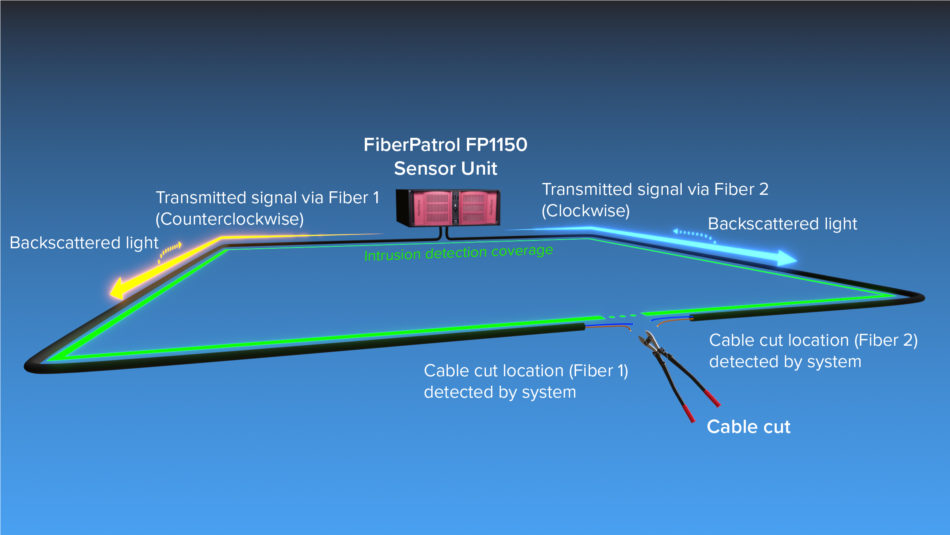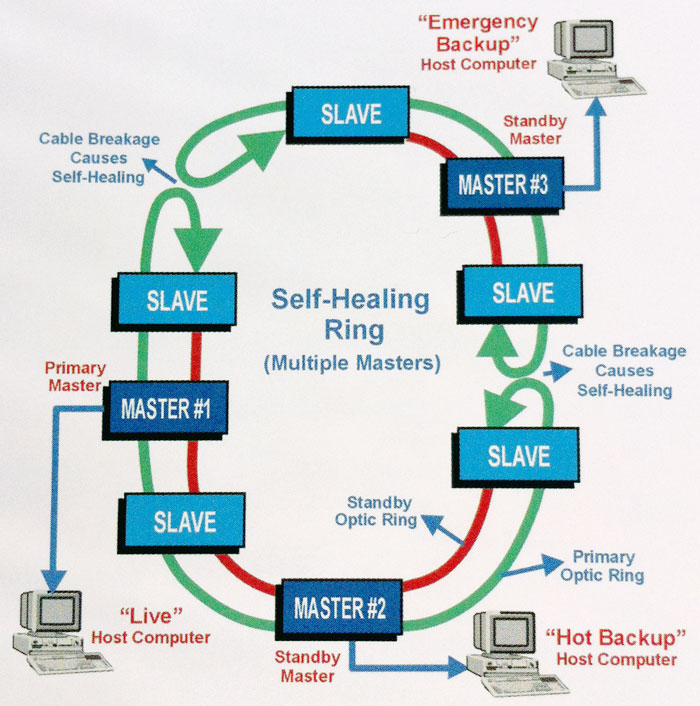Why a Fiber Optic Security System Is Essential for High-Security Facilities and Environments
Why a Fiber Optic Security System Is Essential for High-Security Facilities and Environments
Blog Article
Boost Your Safety With Advanced Fiber Optic Safety And Security Systems
In an era where safety is paramount, sophisticated fiber optic safety and security systems offer an engaging service for improving safety throughout different settings. These systems not only boast exceptional bandwidth and rate for high-resolution monitoring but also use remarkable strength against outside disturbances. As companies significantly look for trustworthy ways to protect their possessions, the assimilation of innovative modern technologies like AI and IoT within fiber optic structures raises vital questions about their effectiveness contrasted to conventional systems. What effects do these improvements hold for future security actions?
Advantages of Fiber Optic Security
Harnessing the benefits of fiber optic innovation substantially improves protection systems across different applications. Among the main benefits is the boosted data transfer capacity, permitting the transmission of large quantities of data at high speeds. This is particularly vital for real-time video security, where high-resolution feeds can be sent out without latency, making certain immediate feedback abilities.
In addition, fiber optics display remarkable resistance to electro-magnetic interference, which is important in environments with potential signal disruptions. This reliability ensures consistent performance in important safety and security procedures. Fiber optic cords are less susceptible to touching and unauthorized gain access to compared to typical copper circuitry, consequently improving data stability and privacy.
An additional significant benefit is the resilience of fiber optic systems; they are a lot more immune to ecological factors such as moisture, temperature fluctuations, and corrosive substances. This durability converts to lower maintenance prices and longer lifespans for security setups.
Lastly, the lightweight nature of fiber optic cable televisions helps with less complicated installation and directing, particularly in complicated infrastructures (fiber optic security system). Inevitably, the integration of fiber optic modern technology right into protection systems not only reinforces security actions yet additionally maximizes operational efficiency
Secret Features to Consider
When evaluating fiber optic protection systems, several key attributes must be taken into consideration to make certain optimal performance and effectiveness. Examine the system's detection range and sensitivity; an extensive variety enables for checking huge areas, while high sensitivity makes certain that even minor disruptions are discovered without delay.
Following, think about the combination capacities of the system. A fiber optic safety system must flawlessly user interface with existing safety procedures such as video cameras and alarm systems, developing a cohesive security network.
Longevity and ecological resistance are also important features. Make sure that the system is developed to withstand harsh climate condition and potential physical threats, as this will extend its operational life-span.

Last but not least, consider the scalability of the system. A her response robust fiber optic safety system ought to be easily expandable to suit future demands without substantial overhauls. By carefully considering these functions, you can select a fiber optic security service that improves safety and safety and security in your atmosphere.
Installation Process Introduction
To efficiently carry out a fiber optic protection system, an organized installment process is vital. This procedure begins with a thorough website assessment to determine the certain safety needs and to recognize ideal places for fiber optic cable televisions and security tools. Following this assessment, the installation group will certainly create a detailed strategy, consisting of cable television pathways, required devices, and compliance with regional regulations.
Next, the installation involves laying the fiber optic cables, guaranteeing they are safeguarded from ecological factors and physical damages. Proper handling strategies are crucial, as fiber optic cable televisions are sensitive and can be quickly damaged. After the cabling is set up, adapters and discontinuations are carefully finished to make certain signal stability.
The subsequent phase includes setting up safety gadgets such as video cameras, activity detectors, more helpful hints and alarm system systems, all incorporated with the fiber optic network. Extensive testing is conducted to verify that all parts are working correctly and to make certain ideal efficiency.

Comparing Fiber Optic to Standard Systems
The advancement of safety and security modern technology has resulted in significant improvements in the comparison between fiber optic systems and conventional copper-based systems. Fiber optic systems utilize light to transfer data, supplying superior bandwidth and rate compared to their copper equivalents. This results in improved data transmission abilities, making fiber optics ideal for high-resolution video clip surveillance and real-time tracking.
Furthermore, fiber optic cords are resistant to electromagnetic interference, lowering the likelihood of signal deterioration caused by exterior variables. This particular makes certain consistent performance, even in tough settings. In comparison, traditional copper systems are extra prone to interference, bring about possible YOURURL.com vulnerabilities in security applications.
Durability is one more benefit of fiber optic systems. They are much less prone to harm from environmental variables such as moisture and temperature level changes, which can endanger copper wiring. Additionally, fiber optics are lighter and thinner, enabling for less complicated setup and minimized physical impact.
Nonetheless, typical systems often tend to have reduced preliminary prices, making them appealing for budget-conscious jobs. While fiber optic systems may require a greater ahead of time financial investment, their long-term advantages-- such as lower upkeep expenses and better reliability-- usually exceed the first cost, placing them as a remarkable option for modern-day protection needs.
Future Trends in Safety And Security Technology
Arising trends in safety technology are positioned to transform the landscape of monitoring and risk detection - fiber optic security system. As organizations significantly encounter advanced threats, developments such as fabricated knowledge (AI) and artificial intelligence (ML) are coming to be indispensable to safety and security systems. These innovations improve the capability of fiber optic systems by enabling real-time information evaluation, identifying anomalies, and automating actions to prospective violations
In addition, the combination of the Internet of Points (IoT) is changing protection structures. IoT devices can supply extensive situational understanding and help with smooth communication in between various protection elements. This interconnectedness permits more reliable monitoring and faster occurrence action times.
Biometric authentication is additionally acquiring momentum, offering a higher level of safety and security through unique physical characteristics. As this technology develops, it is likely to be integrated into fiber optic systems for enhanced accessibility control.
Final Thought
In conclusion, progressed fiber optic safety systems stand for a considerable advancement in safety and security and surveillance technology. The change from conventional systems to fiber optic options reflects an expanding fad towards extra reliable and effective protection procedures in a progressively intricate technical landscape.
Report this page